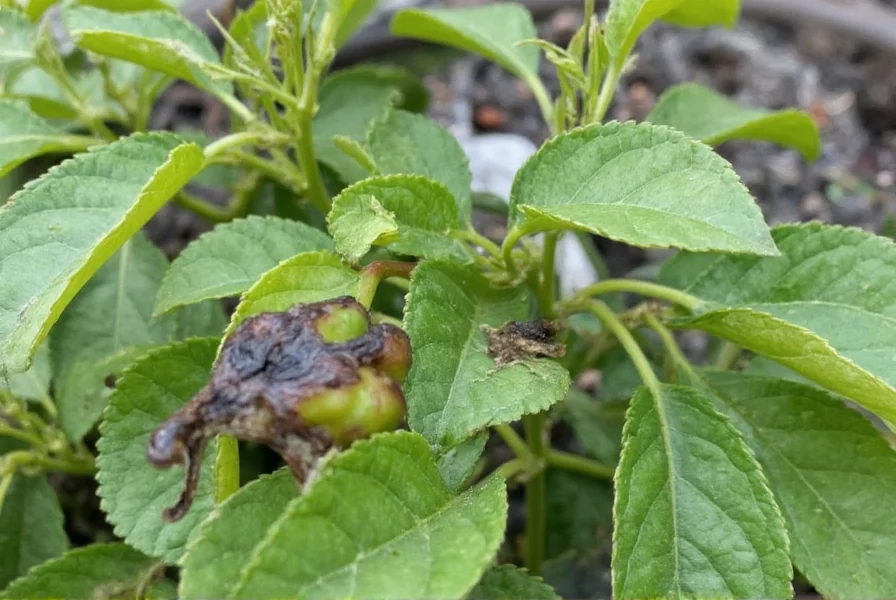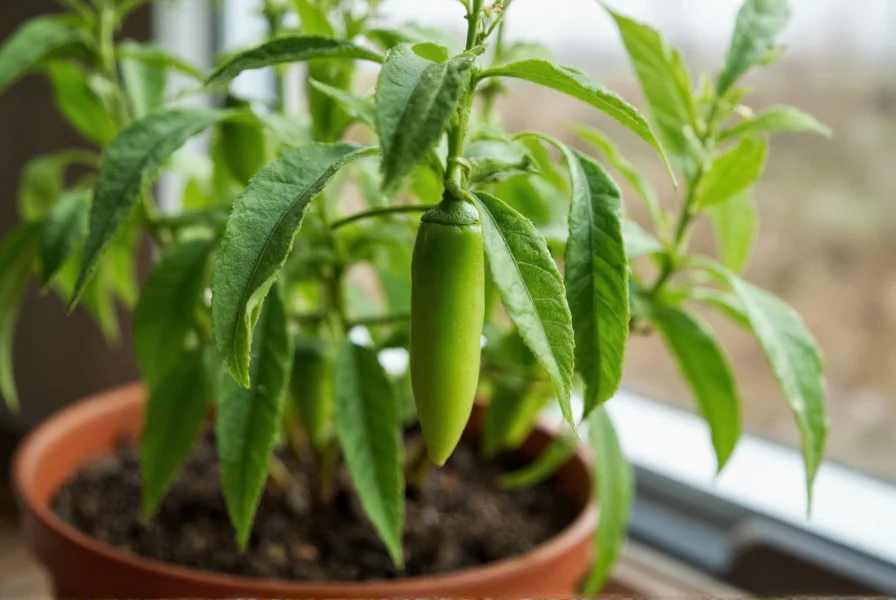Understanding how snow affects chili peppers is crucial for gardeners in temperate and cold climate zones. These heat-loving plants belong to the Capsicum genus, which evolved in tropical regions of Central and South America. Their biological makeup simply doesn't support survival in freezing conditions that accompany snowfall.
Why Chili Peppers Can't Tolerate Snow
Chili pepper plants contain high water content in their cells. When temperatures drop below freezing, this water crystallizes, rupturing cell walls and causing irreversible damage. Unlike deciduous plants that prepare for winter dormancy, chili peppers lack these cold-adaptation mechanisms. The first frost typically kills unprotected chili plants outright.
| Temperature Range | Effect on Chili Pepper Plants |
|---|---|
| 70-85°F (21-29°C) | Optimal growing conditions |
| 50-70°F (10-21°C) | Growth slows significantly |
| 32-50°F (0-10°C) | Cold damage occurs; leaves yellow and drop |
| Below 32°F (0°C) | Fatal damage; plant tissue freezes and dies |
Recognizing Cold Damage in Chili Plants
Before snow arrives, gardeners should watch for early signs of cold stress. Wilting leaves that don't recover after watering, blackened leaf edges, and stunted growth all indicate temperature problems. When snow actually falls on chili plants, the damage becomes immediate and severe. The combination of cold and moisture causes rapid cellular breakdown.

Protecting Chili Peppers from Snow and Cold
Gardeners in regions with occasional frost but rare heavy snow might try temporary protection methods. Covering plants with frost cloth or bed sheets during predicted freezes can provide 2-5 degrees of protection. However, these methods fail completely against actual snow accumulation, which adds weight and prolonged cold exposure.
For gardeners facing regular snowfall, the only reliable options are:
- Harvest all remaining peppers before first frost
- Dig up plants and move them indoors before temperatures drop below 50°F
- Grow chili peppers as annuals, replanting each spring
- Use greenhouse structures with supplemental heating
Overwintering Chili Pepper Plants Indoors
Successfully preserving chili plants through snowy months requires careful indoor transition. Gardeners should:
- Move plants indoors before nighttime temperatures reach 50°F
- Prune plants by one-third to reduce stress
- Place near south-facing windows or provide grow lights
- Maintain temperatures above 60°F
- Reduce watering frequency but maintain humidity
Many gardeners report success with overwintering popular varieties like jalapeños, habaneros, and cayenne peppers. These plants often produce earlier and more abundantly the following season compared to new seedlings.

Cold-Tolerant Alternatives for Snowy Regions
While no true chili peppers survive snow, some gardeners in cold climates experiment with Capsicum chinense varieties that show slightly better cold tolerance. The 'NuMex Twilight' ornamental pepper and 'Prairie Fire' cultivar demonstrate marginally better performance in cooler conditions, though they still cannot withstand actual snow.
Gardeners determined to grow peppers in snowy regions should focus on short-season varieties that mature quickly before winter arrives. Early jalapeño, Hungarian wax, and Anaheim types often succeed with proper season extension techniques like black plastic mulch and wall-o-water protectors.
Planning for Next Season After Snow Damage
If your chili plants succumb to snow, don't despair. Start new plants from seeds indoors 8-10 weeks before your last expected frost date. Use heat mats to maintain soil temperatures around 80°F for optimal germination. When transplanting outdoors, continue protecting young plants with row covers until nighttime temperatures consistently stay above 55°F.
Can chili pepper plants survive a light snowfall?
No, chili pepper plants cannot survive even light snowfall. Snow indicates temperatures at or below freezing (32°F/0°C), which causes immediate cellular damage to these tropical plants. The moisture from snow combined with freezing temperatures destroys plant tissue rapidly.
What temperature kills chili pepper plants?
Chili pepper plants suffer fatal damage when temperatures drop below 32°F (0°C). While they begin showing stress below 50°F (10°C) and experience slowed growth below 60°F (15°C), actual death occurs when freezing happens. Frost or snow exposure typically kills unprotected plants within hours.
How can I save my chili plants before snow arrives?
To save chili plants before snow, harvest all mature peppers and move the entire plant indoors at least one week before expected freezing temperatures. Prune the plant by one-third, place it in a sunny window or under grow lights, and maintain temperatures above 60°F. Water sparingly but mist leaves regularly to maintain humidity.
Do any chili pepper varieties tolerate cold weather better?
Some chili varieties like 'NuMex Twilight' and 'Prairie Fire' show slightly better cold tolerance, surviving brief exposures to 40°F (4°C). However, no true chili peppers can withstand snow or freezing temperatures. These marginally hardier varieties still require protection when temperatures approach freezing.
Can I grow chili peppers year-round in a snowy climate?
Yes, you can grow chili peppers year-round in snowy climates by moving plants indoors before first frost. Use grow lights to provide 12-14 hours of light daily, maintain temperatures between 65-80°F, and hand-pollinate flowers since indoor environments lack natural pollinators. Many gardeners successfully overwinter chili plants for multiple seasons using this method.











 浙公网安备
33010002000092号
浙公网安备
33010002000092号 浙B2-20120091-4
浙B2-20120091-4